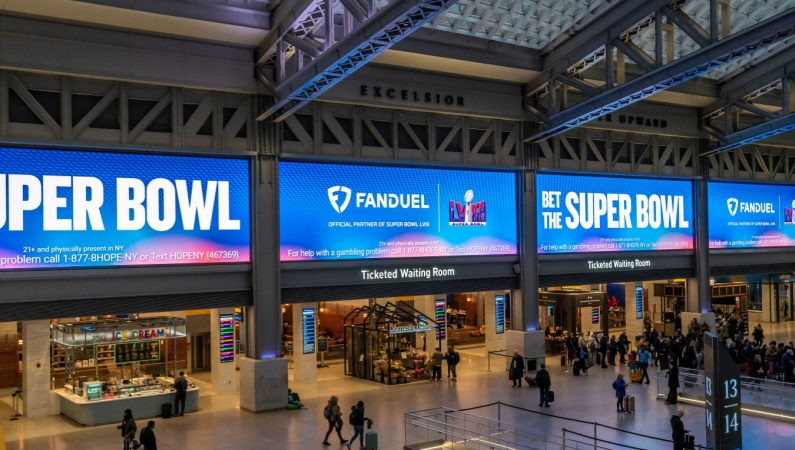Ad fad fades
All the noise and politicking over sports betting’s 2022 record-breaking ad spend has been significantly muted by news the market’s remaining viable players have reduced their ad spend by 21% in 2023.
The American Gaming Association (AGA) on Thursday took to X with a link to its Nielsen-commissioned study revealing sports betting firms cut ad spend by 21% in 2023:
This first decline in ad spend since 2016 takes a lot of the sting out of political campaigns like those of New York congressman Paul Tonko. Tonko and others like him decried that excessive exposure to gambling ads leads to addiction.
According to the AGA report, Americans saw 14% fewer gambling ads in 2023 than they did in 2022.
The AGA report focused on gambling/gaming industry ad spend data from Nielsen’s Ad Intel that ran the numbers on multi-media advertising campaigns for sports betting, casino, lottery, daily fantasy sports.
The big dip in ad spend shows signs of a mature market more concerned about nurturing the customers they worked so hard to get than paying top dollar for new-recruit ad campaigns that saturated sports TV in recent years.
Market attrition
Since the repeal of PASPA in 2018, DraftKings and FanDuel have emerged as the brand leaders of the US sports betting market. The pair hold over 80% of the US’s sports betting market share, with BetMGM, BetRivers, and Caesars divvying up most of the remainder.
The battleground for market share includes the corpses of FOX Bet, MaximBet, Barstool, Wynn Resorts, and Fubo. Into that vacuum, however, came serious new players ESPN Bet and Fanatics. The former acquired Barstool and launched in 18 states within the first few months of the rebrand. Fanatics concluded its takeover of PointsBet’s US business last month and now has a retail and online sports betting footprint in 19 states.
News also emerged this week that sports betting and online casino provider Tipico is on the verge of selling its proprietary US facing sports betting platform, with MGM Resorts the likely buyer and BetMGM the likely direct beneficiary.
the early heady pace of sports betting legalization is slowing down
While legal sports markets now exist in 38 states and the District of Columbia, the early heady pace of sports betting legalization is slowing down, with ad spend following suit.
Now the ad spend race has slowed, the majority of sports bettors have found a brand that resonates with them, and shareholders in the big brand sportsbooks are hungry to see profits in 2024, meaning corporate attention has shifted to cost management.
TV time out
With sports betting scandals erupting in the NBA with Jontay Porter’s lifetime ban, MLB’s drama involving Shohei Ohtani’s interpreter, and multiple NFL bans, albeit with some players recently reinstated, it’s also a smart PR move for sportsbooks to take a lower national profile.
The AGA study has subsequently noted a 23% drop in TV advertising marketing expenses over 2022. Ironically, despite all the media furor generated by the likes of Tonko, the percentage of sports betting ads on TV even during the gold rush for market share doesn’t get close to comparing to what drug or fast-food companies spend.
Over the last three years, sports betting TV ad spend hasn’t topped 1% of total TV ad revenues. In contrast, the pharmaceutical industry accounts for 13% and fast-food companies 4% of total television ad revenues.
